Maha Mrityunjay Havan | Maha Mrithyunjaya Homam
PurePrayer provides best Vedic and experienced Pandits, Pujaris, Purohits, Vadhyars for a Hassle-free Maha Mrityunjay Havan or Maha Mrithyunjaya Homam. You can book the Pandit, Purohit or Vadhyar Online with Puja Samagri, suited for your traditions like Bengali, Bihari, Kannada, Maithili, Malayalam, Oriya (Odia), Madhwa, Smartha, Shaiva, Tamil Telugu, Tulu and many more.
PurePrayer is India’s best online puja platform and an Official Partner for Govt. Of Karnataka for Online Pujas and Sevas bookings in Muzrai Temples. PurePrayer offers best Pandits in Bangalore services for your home and office Puja needs. Our Pandits are Multi lingual and proficient in Puja- Vidhis ascribed in Grihya Sutras.
What is Maha Mrityunjaya Mantra?
Maha Mrityunjaya Mantra is believed to be the most Divine and powerful of all mantras. It is a powerful healing mantra that is dedicated to Lord Shiva. References to the Maha Mrityunjaya Mantra can be found in the Rigveda and is also believed to be the strongest Mantra for conquering the fear of death.
Maha Mrityunjaya Mantra has various names, Rudra Mantra, Tryambak Mantra and Mrita Sanjivini Mantra. Maha Mrityunjaya is an amalgamation of Maha (Great), Mrityu (Death), Jaya (Victory) which means victory over death.
The Mantra includes 32 syllables.
Among the Devotees of Lord Shiva, the Maha Mrityunjaya Mantra is the most popular and chanted widely. The chanting of the Maha Mrityunjaya Japa helps attain Moksha and is majorly about conquering death.
Importance of Maha Mrithyunjaya Homam-Japa-Mantra
The all powerful Maha Mrithyunjaya Homam and Japa is believed to help all aspects of life: emotional, physical and mental.
Chanting the Mantra 108 times on a daily basis brings many positive benefits. The Mantra is believed to bring in positive and highly effective vibrations that can remove negative energies and charging your ambience with positive energy.
The Mantra should be chanted clearly and using the correct pronunciation. Hearing the chants of the Maha Mrityunjaya Mantra can also instill healing powers.
Regular chanting of the Maha Mrityunjaya Mantra with complete devotion protects a person from critical illness, diseases, evil spirits and untimely death.
Maha Mrithyunjaya Homam Mantra
|| ॐ त्र्यम्बकं यजामहे सुगन्धिं पुष्टिवर्धनम् ||
| उर्वारुकमिव बन्धनान् मृत्योर्मुक्षीय मामृतात् ||
|| ಓಂ ತ್ರ್ಯಂಬಕಂ ಯಜಾಮಹೆ ಸುಗಂಧಿಂ ಪುಷ್ಟಿವರ್ಧನಮ್ |
| ಉರ್ವಾರುಕಮಿವ ಬಂಧನಾನ್ ಮೃತ್ಯೋರ್ಮುಕ್ಷೀಯಮಾಮೃತಾತ್ ||
|| Om tryaMbakam yajAmahe sugandhiM pushTivardhanam |
| urvarukamiva Bandhanan Mrityor Mukshiya Maamritat ||
Meaning of Maha Mrityunjaya Mantra
Salutations! We Worship the Three-Eyed One (Lord Shiva), who is ever-fragrant (Spiritual Essence) and who nourishes all beings. May he severe our bondage of Samsara (Worldly Life), like a cucumber (severed from the bondage of its Creeper), and thus Liberate us from the ‘Fear of Death’, by making us realize that our Atma never separate from the Supreme Consciousness.
Literal Meaning of Maha Mrityunjaya Mantra:
ॐ aum = Absolute Reality, a sacred/mystical syllable
त्र्यम्बकम् tryambakam = the three-eyed one
त्रि tri = “three”
अम्बक ambaka = “eye”
यजामहे yajāmahe = we worship, we adore, honor
सुगन्धिम् sugandhim = the fragrant, the virtuous, the supreme being
पुष्टिवर्धनम् puṣṭi + vardhanam = the bestower of nourishment, wealth, perfection, literally him who possesses the growth of nourishment
पुष्टि puṣhṭi = nourishment, increase, wealth, perfection
वर्धन vardhana = increase, growth
उर्वारुकम् urvārukam = fruit, a kind of cucumber
इव iva = as
बन्धनान् bandhanān = from bondage, from the stalk/stem
मृत्योः mṛtyoḥ = from death
मुक्षीय mukṣīya = may I be freed/released
मा ऽमृतात् mā ‘mṛtāt = not (mā) mortal(mṛtāt) | immortal
What is Maha Mrityunjaya Chant Procedure?
The proper procedure of chanting the Maha Mrityunjaya Mantra is early in the morning after a bath. Start with Achamana, and Pranayam or breathing exercises to focus. Maha Mrityunjaya Kavacham is recited before and after the chant. Maha Mrityunjaya Mantra should be chanted facing the east. Use a Rudraksha Mala to chant the Mantra to increase the intensity. The chanting can be performed once, thrice, 5 times, 11 times, 21 times or 108 times with complete concentration and pure intension. The Mantra can be chanted every day and at any time.
Who should perform Maha Mrithyunjaya Homam or Mrityunjay Havan?
Anyone can perform Maha Mrityunjaya Homam. But it is especially advised for individuals suffering from illnesses, disease. It is also ideal for those seeking peace and calm and well-being and balance. Maha Mrityunjaya Homa is advisable for those looking for spiritual growth and Moksha.
Benefits of Maha Mrityunjaya Homam
- Brings you the benevolence of Lord Shiva
- Fulfills the wishes
- Brings relief from stress, troubles and worries
- Removes negative energies and instills positive energies
- You will be blessed with long life, balance, peace, calmness, good health
- Elimination of disease, ailments, illness, and untimely death
- Protects from uncertainties, calamities, accidents
- Transforms your spiritual growth, live a better life, attain Moksha
Maha Mrityunjaya Samagri List / Maha Mrityunjaya Items
- Turmeric powder (100gm)
- Kumkum (100gm)
- Rangoli Powders (White, Green, black colors)
- Blouse piece for Kalash
- Betel leaves and betel nuts
- Bricks numbering a dozen
- Coins
- Agarbathies
- Image of Ishta Devata and Griha Devata
- Sandalwood (Chandanam) powder
- Kalash thread
- Raw rice
- Coconuts (10 No.)
- Plantain leaves (5 No.)
- Cotton wicks, camphor and incense sticks
- Ghee or oil for lamps
- Honey
- Jaggery
- Dried coconut (Kopra)
- Rice about 5kg
- Rose water
- Fruits five different varieties
- Flowers and garlands
- Mango leaves tied for Toran and loose ones
- Dadhyodan for Naivedyam and distribution
- Trays and bowls for Puja Samagri
- Vibhuti
- Dry fruits
- Tender coconut
- Milk (500ml)
Other Maha Mrityunjaya Havan Items
Agarbatti (1 pkt), Ashtagandh (25gms), Jenau (1 roll), Akshat (200gms), Attar (1 small bottle), Barley / Jau (100gms), Camphor (Bhimsaini) (100gms), Cardamom (50gms), Cloves (50gms), Cotton Wick (20 wicks), Dhoop (1pkt), Dry fruits (250gms), Gangajal (250ml), Ghee (1kg), Haldi Akkha (200gms), Honey (1 small bottle), Jaggery (200gms), Kumkum (1 pkt), Kusha (1 bundle), Mauli (1 roll), Moong (500gms), Supari – Big (15 pcs), Wheat (1 kg), Nariyal (fresh) (3 pcs), Nariyal (dry) (1 pcs), Gulal (1 pkt), Abeer (50 gms), Khopra (1 pcs), Rose Water (1 small bottle), Sugar, Yellow Mustard (50gms), Rangoli
Red, White & Yellow Cloth, White Thread bundle, Fruits, Sweets
Maha Mrityunjay Havan Kit
Havan Kund – 1, Til (Black – 250gms), Til (White – 250gms), Havan Samagri (500gms), Kali Urad (50gms), Yellow Mustard (50gms), Guggul (100gms), Sticks (3 to 5kgs), Samidha Bundle (5 bundles), Navgrah Sticks (1 Bundle), Wooden Spoons for Havan (2 pcs), Wooden bowls for Havan (2 bowls), Cow Dung Cakes (2 pcs), Abeer (50gms), Jau (100gms), Ghee (1 Kg), Kusha (1 bundle), Matchbox, Lotus Seeds (100 gms), Agar (50gms), Jatamansi (50gms), Shuchi – 1, Shruva – 1, Dron (1 bundle)
H6 -Flowers:
Mixed Flowers (500gms), Durva – 5Rs, Tulsi – 2 bundle, Bel Patra – 20 pcs, Rose – 6, Veni – 1, Garland – 3 different, Paan Leaves, Mango Leaves
Puja Utensils:
Copper Kalash (3-5), Copper Plates (3-5), Panchpatra Set – 1, Akhand Diya – 1, Thali (3-5), Brass Bowls – 15, Spoons – 10, Cloth (Red, Yellow, Green, Black, White, Pink), Dhoti – 4, Saree – 1, Colors (Red, Green, Black, Yellow), Panch Aarti – 1, Bell – 1, Agarbatti Stand – 1, Dhoop Stand – 1, Abhishek Pot – 1
Panchamrit:
Milk, Curd, Ghee, Honey, Sugar/Jaggery
Maha Mrityunjaya Havan | Homam Procedure
Swasti Vaachan, Shanti Path, Sankalp, Gauri-Ganesh Pujan, Kalash Pujan, Shiva Sthapan, Navgrah Sthapan, Brahma Sthapan, Agni Sthapan, Shiv Shodashopchar Puja, Maha Mrutyunjaya Mantra Japa, Maha Mrutyunjaya Yantra Pujan, Homa, Purnahuti, Aarti and Prasad to Brahmins.
Maha Mrityunjaya Japa 1 – 11000 Chants
No. of Pandit for Maha Mrityunjaya – 3
Duration – 1 Day
Maha Mrityunjaya Japa 2 – 21000 Chants
No. of Pandit for Maha Mrityunjaya – 6
Duration – 1 Day
Maha Mrityunjaya Japa 3 – 51000 Chants
No. of Pandit for Maha Mrityunjaya – 14
Duration – 3 Days
Maha Mrityunjaya Japa 4 – 125000 Chants
No. of Pandit for Maha Mrityunjaya – 10
Duration – 4 Days
Mrithyunjaya Homam | Mrityunjay Havan at Gokarna Kshetra
You can choose performing Mrithyunjaya Homam in Gokarna Mahabaleshwara Kshetra for highly effective results.
Gokarna Kshetra is a beach-town in the confluence of rivers Gangavalli and Aghanashini in the Kumta taluk of Uttara Kannada district in Karnataka State. This also known as the Bhu-Kailasa, Southern Kashi and Rudrapada-Gaya of India. Gokarna has been a popular destination for performing Pujas and Homas and said to be very effective in nature.
Lord Shiva consecrated by Lord Ganapati here was the ‘Atmalinga’ given to the demon king Ravan and is popularly known as Mahabaleshwara. The main deity in Mahabaleshwar temple in Gokarna kshetra is Lord Shiva.
Gokarna is also known as the southern Kashi of India and has been popular for Shraddha Pujas such as Narayana bali Puja, Tripindi Shraddha, Thila Homam, Navagraha-purak-aghorastra-puja, Narayan bali, Mrityunjaya Homam, Pind daan, Varshik Shraddh and many more Pujas performed by local priest families since times immemorial.
Mrithyunjaya Homam | Mrityunjay Havan @ Kumbakonam Teerth Kshetra
Mrithyunjaya Homam or Mrityunjay Havan in Kumbakonam Kshetra is highly meritorious as this Kshetra is a Navagraha sthalam.
Kumbakonam is very famous as a Temple-Town of Tamil Nadu in the South India. Sri Adi Kumbeshwarar temple is one of the oldest in Kumbakonam. Sri Chakrapani temple dedicated to Lord Vishnu is a must see place of worship. Kumbakonam finds mention in Changa Puranam (Sanga Puranam) and Tevarams.
Mrithyunjaya Homam | Mrityunjay Havan @ Srirangapatna Kshetra
Perform Mrithyunjaya Homam or Mrityunjay Havan with best Vedic and highly experienced Pandits and Purohits from Pureprayer at Triveni Sangam, Srirangapatna kshetra.
Srirangapatna is an ancient Teertha Kshetra on River Kaveri located in Mandya district of Karnataka state. Sri Ranganatha Swamy is the presiding deity here and inspiration to many devotional songs. Srirangapatna Kshetra reached primacy during the period of Sri Ramanujacharya, the founder of ‘Vishishtadvaita Philosphy’. Srirangapatna is one among the Tri-ranga kshetras and known as Adiranga. Madhyaranga and Srirangam are the other two.
Srirangapatna is well known for Shraddh rituals such as Naryanabali, Moksha Narayanabali, Tripindi Shradh, Pinda Pradaana, Asti Visarjan, Pind Daan and Masika / Varshika Shraddha performed on the banks of river Kaveri for the departed near and dear ones.
Triveni Sangam at Srirangapatna is the confluence of three rivers Kaveri, Lokapavani and Kabini. Many devotees visit the Sangam during Dakshinayan, commencing from Shravanmaas for performing ancestral worships, Pind Daan, Tripindi shraddh, Shradh Puja, Varshika Shradh, Pitru paksha shradh.
PurePrayer provides best Vedic and experienced Pandits, Pujaris, Purohits, Vadhyars for a Hassle-free Maha Mrityunjay Havan or Maha Mrityunjaya Homam
FAQs On Maha Mrityunjaya Havan | Homam
Why is Maha Mrityunjaya Homam performed?
Performing the life giving Maha Mrityunjaya Havan or Homam with Japa has positive effects and removes negativity and fears. It provides a deep spiritual awakening and helps realize an individual self.
Which day of the week is good for performing Maha Mrityunjaya?
Sundays and Mondays.
When should Maha Mrithyunjaya Homam be performed?
The best days to perform Maha Mrithyunjaya Homam is on Masa Shivratri, Maha Shivaratri and during the Shravanmaas (month of Shravan).
Maha Mrityunjaya Homa should be performed during the Janma Nakshatram (Birth Star). It is also suggested if anyone is suffering from a prolonged illness. Suggested when ‘Maraka Dosha’ is observed in the horoscope.
Our Service Assurance
- Pandit/Purohit services for all requirements in Bangalore performed by Gurukul certified Vedic scholars who can speak and communicate in your language like Bengali, Bihar, English, Hindi, Kannada, Malayalam, Marathi, Oriya, Tamil, Telugu etc
- Expertise in Pujas, Homas, Pariharas, Rites and rituals, Shodash Samskars
- Punctuality in delivering Purohit services
Our Service Includes
- Selection of a place or a Kshetra for the ceremony
- Selection of an appropriate Purohit (Iyer, Iyengar, Madhwa, Smartha etc) for the ceremony
- Puja Samagri along with other arrangements at the venue
- Multi-lingual Purohits

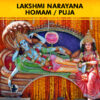
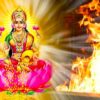
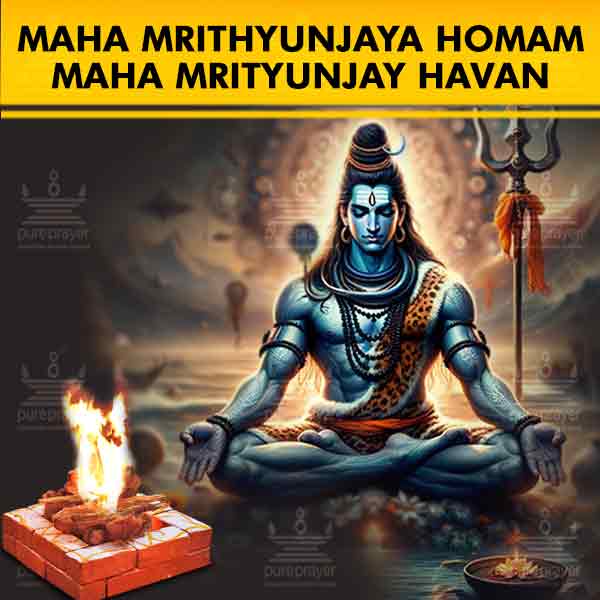

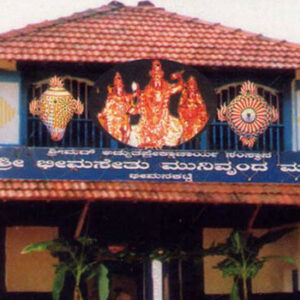
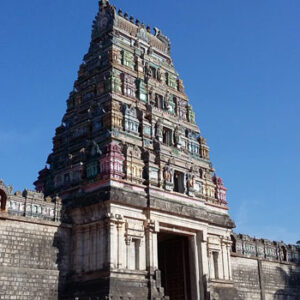
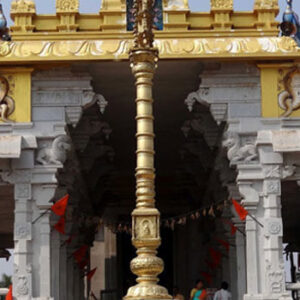
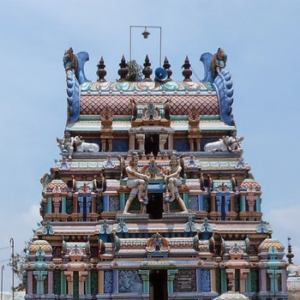
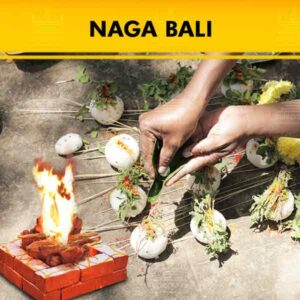
Reviews
There are no reviews yet.